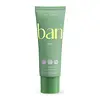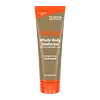What's inside
What's inside
 Key Ingredients
Key Ingredients

 Benefits
Benefits

 Concerns
Concerns

 Ingredients Side-by-side
Ingredients Side-by-side

Water
Skin ConditioningPropanediol
SolventSaccharomyces Ferment
Skin ConditioningHamamelis Virginiana Water
AstringentMandelic Acid
AntimicrobialLactic Acid
BufferingGlycerin
HumectantSodium Hydroxide
BufferingAloe Barbadensis Leaf Juice
Skin ConditioningPolysorbate 20
EmulsifyingHydroxyethylcellulose
Emulsion StabilisingSodium Benzoate
MaskingXylityl Sesquicaprylate
AntimicrobialPotassium Sorbate
PreservativeNiacinamide
SmoothingPanthenol
Skin ConditioningShikimic Acid
Skin ConditioningSodium Phytate
Lactobacillus/Soybean Ferment Extract
Skin ConditioningInulin
Skin ConditioningCalendula Officinalis Flower Extract
MaskingAesculus Hippocastanum Seed Extract
Skin ConditioningFructose
HumectantSodium Hyaluronate
HumectantWater, Propanediol, Saccharomyces Ferment, Hamamelis Virginiana Water, Mandelic Acid, Lactic Acid, Glycerin, Sodium Hydroxide, Aloe Barbadensis Leaf Juice, Polysorbate 20, Hydroxyethylcellulose, Sodium Benzoate, Xylityl Sesquicaprylate, Potassium Sorbate, Niacinamide, Panthenol, Shikimic Acid, Sodium Phytate, Lactobacillus/Soybean Ferment Extract, Inulin, Calendula Officinalis Flower Extract, Aesculus Hippocastanum Seed Extract, Fructose, Sodium Hyaluronate
Water
Skin ConditioningMandelic Acid
AntimicrobialMaranta Arundinacea Root Powder
Skin ConditioningTapioca Starch
Isoamyl Laurate
EmollientHydroxypropyl Starch Phosphate
Cetearyl Alcohol
EmollientCaffeine
Skin ConditioningCaprylic/Capric Triglyceride
MaskingBehenyl Alcohol
EmollientHydrogenated Castor Oil
EmollientAloe Barbadensis Leaf Juice
Skin ConditioningTheobroma Cacao Seed Butter
EmollientTocopherol
AntioxidantAllantoin
Skin ConditioningPanthenol
Skin ConditioningStearyl Alcohol
EmollientDimethicone
EmollientCetearyl Glucoside
EmulsifyingPentylene Glycol
Skin ConditioningPhenylpropanol
MaskingPotassium Hydroxide
BufferingDipropylene Glycol
HumectantSodium Benzoate
MaskingTetrasodium Glutamate Diacetate
Water, Mandelic Acid, Maranta Arundinacea Root Powder, Tapioca Starch, Isoamyl Laurate, Hydroxypropyl Starch Phosphate, Cetearyl Alcohol, Caffeine, Caprylic/Capric Triglyceride, Behenyl Alcohol, Hydrogenated Castor Oil, Aloe Barbadensis Leaf Juice, Theobroma Cacao Seed Butter, Tocopherol, Allantoin, Panthenol, Stearyl Alcohol, Dimethicone, Cetearyl Glucoside, Pentylene Glycol, Phenylpropanol, Potassium Hydroxide, Dipropylene Glycol, Sodium Benzoate, Tetrasodium Glutamate Diacetate
Ingredients Explained
These ingredients are found in both products.
Ingredients higher up in an ingredient list are typically present in a larger amount.
Aloe Barbadensis Leaf Juice comes from leaves of the aloe plant. Aloe Barbadensis Leaf Juice is best known for helping to soothe sunburns. It is also anti-inflammatory, moisturizing, antiseptic, and can help heal wounds.
Aloe is packed with good stuff including Vitamins A, C, and E. These vitamins are antioxidants, which help fight free-radicals and the damage they may cause. Free-radicals are molecules that may damage your skin cells, such as pollution.
Aloe Barbadensis Leaf Juice also contains sugars. These sugars come in the form of monosaccharides and polysaccharides, folic acid, and choline. These sugars are able to help bind moisture to skin.
It also contains minerals such as calcium, 12 anthraquinones, fatty acids, amino acids, and Vitamin B12.
Learn more about Aloe Barbadensis Leaf JuiceMandelic Acid is an alpha hydroxy acid (AHA).
Like other AHAs, it helps exfoliate the surface of the skin by breaking down the bonds that hold dead skin cells together. This helps reveal smoother and brighter skin underneath.
Mandelic acid helps with:
Due to it having a larger molecular size than glycolic acid, mandelic acid is able to penetrate the skin more slowly and evenly. This makes it gentler and less irritating, making it a great option for sensitive or beginner skin.
Despite being milder, mandelic acid is still an effective exfoliant that improves skin texture and tone over time.
What makes mandelic acid stand out from other AHAs? It has antibacterial and antioxidant properties.
These traits make it a great option for acne-prone or problem skin by reducing active breakouts and fading post-acne marks. Studies show that mandelic acid (especially when combined with salicylic acid) can significantly reduce pimples and hyperpigmentation while causing fewer side effects than stronger acids.
Mandelic acid is effective in concentrations of 5% and up with an ideal pH range of 3-4 for at-home use.
Like other AHAs, it’s important to wear sunscreen daily to protect your newly exfoliated skin.
However, unlike glycolic acid, mandelic acid is light-sensitive. Be sure your mandelic acid is packaged in opaque containers to ensure it stays stable and effective.
In short, mandelic acid is a gentle yet powerful AHA that exfoliates, brightens, and helps clarify skin while keeping irritation low. Its antibacterial action makes it especially beneficial for those with acne-prone, sensitive, or uneven skin, offering smoother, clearer, and more even-toned results over time.
Read more about some other popular AHA's here:
Learn more about Mandelic AcidPanthenol is a common ingredient that helps hydrate and soothe the skin. It is found naturally in our skin and hair.
There are two forms of panthenol: D and L.
D-panthenol is also known as dexpanthenol. Most cosmetics use dexpanthenol or a mixture of D and L-panthenol.
Panthenol is famous due to its ability to go deeper into the skin's layers. Using this ingredient has numerous pros (and no cons):
Like hyaluronic acid, panthenol is a humectant. Humectants are able to bind and hold large amounts of water to keep skin hydrated.
This ingredient works well for wound healing. It works by increasing tissue in the wound and helps close open wounds.
Once oxidized, panthenol converts to pantothenic acid. Panthothenic acid is found in all living cells.
This ingredient is also referred to as pro-vitamin B5.
Learn more about PanthenolSodium Benzoate is a preservative. It's used in both cosmetic and food products to inhibit the growth of mold and bacteria. It is typically produced synthetically.
Both the US FDA and EU Health Committee have approved the use of sodium benzoate. In the US, levels of 0.1% (of the total product) are allowed.
Sodium benzoate works as a preservative by inhibiting the growth of bacteria inside of cells. It prevents the cell from fermenting a type of sugar using an enzyme called phosphofructokinase.
It is the salt of benzoic acid. Foods containing sodium benzoate include soda, salad dressings, condiments, fruit juices, wines, and snack foods.
Studies for using ascorbic acid and sodium benzoate in cosmetics are lacking, especially in skincare routines with multiple steps.
We always recommend speaking with a professional, such as a dermatologist, if you have any concerns.
Learn more about Sodium BenzoateWater. It's the most common cosmetic ingredient of all. You'll usually see it at the top of ingredient lists, meaning that it makes up the largest part of the product.
So why is it so popular? Water most often acts as a solvent - this means that it helps dissolve other ingredients into the formulation.
You'll also recognize water as that liquid we all need to stay alive. If you see this, drink a glass of water. Stay hydrated!
Learn more about Water